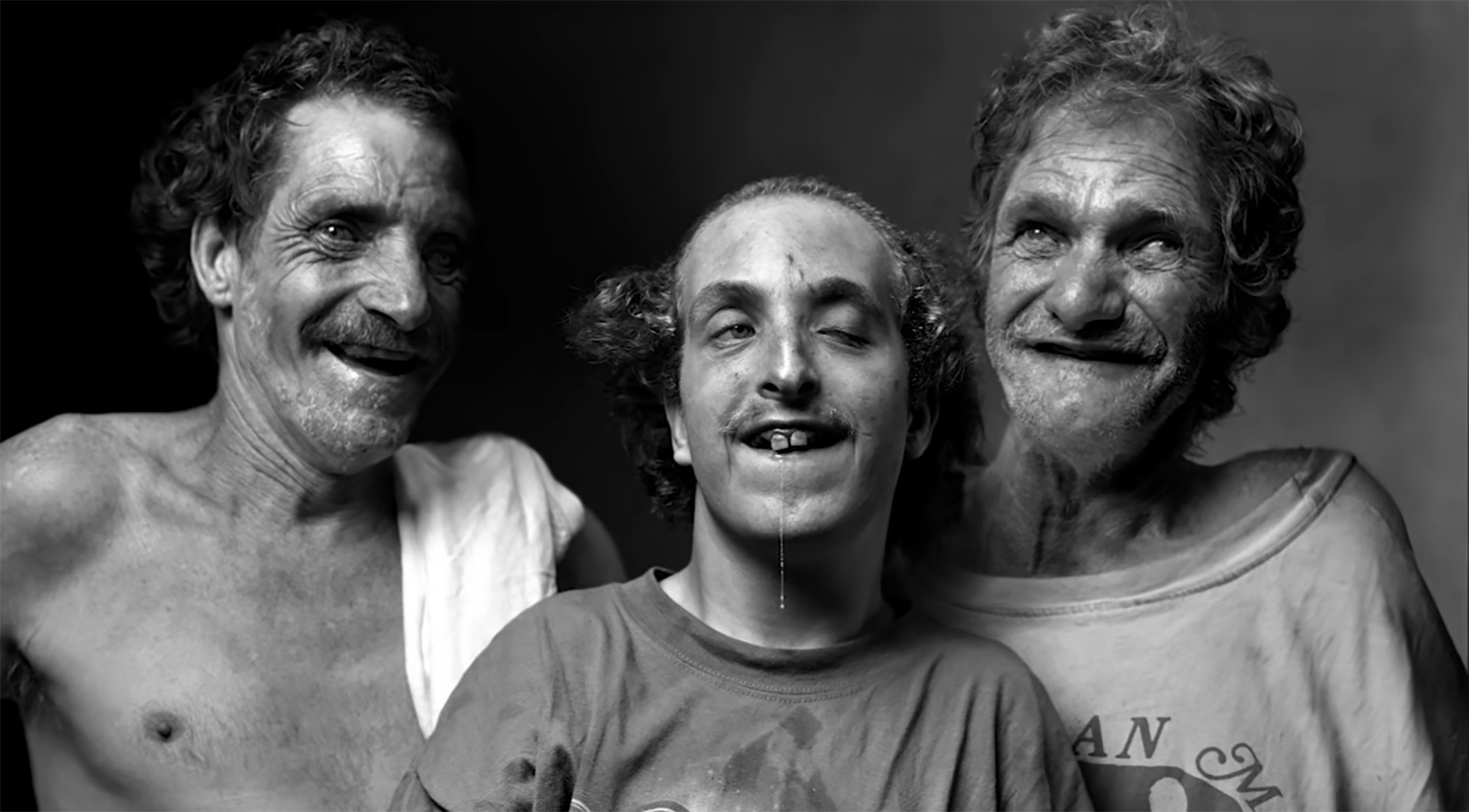They say blood is thicker than water, but for some families, that saying takes on a disturbingly literal meaning. The story of the Whittaker family, often labeled “America’s Most Inbred Family,” is a stark reminder of the hidden corners of society and the profound consequences of genetic isolation. Photographer and documentarian Mark Laita brought their secluded world in rural West Virginia to light, revealing a family whose unique circumstances and way of life challenge our understanding of community and heredity.
Laita’s initial encounter with the Whittakers in 2009, and subsequent visits, were nothing short of extraordinary. Residing in Odd, West Virginia, a small mountain town with a population hovering around 779, the Whittakers live a life largely removed from mainstream society. Their communication, often described as grunts and barks, initially shocked Laita, who recounted his experience as “out of control — the craziest thing I’d ever seen” on the Konkrete podcast. His work, featured in his book “Created Equal” and extensively on his YouTube podcast “Soft White Underbelly,” aims to document the human condition in its rawest forms, and the Whittakers’ story is a compelling, if unsettling, example.
 Mark Laita's portrait of the Whittaker family from Soft White Underbelly.
Mark Laita's portrait of the Whittaker family from Soft White Underbelly.
The Whittaker family, as documented by Laita, currently consists of siblings Betty, Lorraine, and Ray, along with their cousin Timmy. The family previously included their brother Freddie, who has since passed away due to a heart attack. Reports suggest there are other, unnamed family members who remain outside of Laita’s direct contact. Living in apparent poverty, their existence is far from easy. As Laita observed, “Despite the fact that they don’t complain, it’s a really rough life … There’s these people walking around and their eyes are going in different directions and they are barking at us.” Of the siblings, Timmy is reportedly the only one to have graduated high school, highlighting the limited opportunities and challenges they face.
During his first visit, Laita’s attempt to document the family was met with hostility from a neighbor, who brandished a shotgun, reflecting the community’s protective stance towards the Whittakers and their suspicion of outsiders. This initial distrust eventually gave way, allowing Laita to capture the family’s life through his lens.
 The Whittaker siblings standing outside their home in Odd, West Virginia.
The Whittaker siblings standing outside their home in Odd, West Virginia.
Laita himself drew a comparison between his experience and the movie “Deliverance,” referencing its portrayal of isolated mountain communities. He described the family’s behavior vividly: “There’s these people walking around and their eyes are going in different directions and they are barking at us… The one guy you’d look at him in the eye or say anything and he’d scream and go running away and his pants would fall around his ankles and he’d go running off and go kick the garbage can. This would happen over and over.”
The Whittaker family’s circumstances are deeply rooted in a history of inbreeding. While initial reports indicated the parents were siblings, the family clarified they were double first cousins. This means they shared both sets of grandparents, significantly increasing the likelihood of genetic abnormalities. The visible physical and intellectual challenges faced by some family members are stark reminders of the potential consequences of consanguinity. Their limited verbal communication, often relying on grunts and squawks, is a poignant example of these effects. Despite these limitations, family members conveyed to Laita that they understood questions and would express their displeasure if they disliked a topic.
 Ray Whittaker on the porch of his family home, featured in Soft White Underbelly documentary.
Ray Whittaker on the porch of his family home, featured in Soft White Underbelly documentary.
According to expert sources like ThoughtCo, inbreeding elevates the risk of various health issues, including reduced fertility and increased susceptibility to genetic disorders. While the Whittakers’ specific conditions are not explicitly detailed, the visible signs align with the known effects of inbreeding. When Laita inquired about the unusual eye alignment of one family member, the response, “might be coal mining,” reveals a lack of awareness regarding the genetic origins of their health issues. This highlights a potential lack of access to education and healthcare within their isolated community.
Laita’s work has faced criticism, with some accusing him of exploiting the Whittakers and perpetuating negative stereotypes about Appalachia. Channels like Real Appalachia have voiced concerns that such documentaries reinforce harmful tropes of inbreeding within the region. However, Laita defends his intentions, stating his aim is to highlight the severe poverty faced by the Whittakers and others in similar situations. He emphasizes the need to bring awareness to these overlooked communities, arguing against romanticized notions of self-sufficient Appalachian life, especially when basic needs and support are lacking.
 The Whittaker family outside their dilapidated home before renovations, as documented by Mark Laita.
The Whittaker family outside their dilapidated home before renovations, as documented by Mark Laita.
To address the Whittaker family’s immediate needs, Laita established a GoFundMe campaign, which has successfully raised nearly $50,000 towards its $75,000 goal. Funds are being used for living expenses and much-needed home improvements. A follow-up video in 2022 showcased Ray Whittaker proudly giving a tour of their renovated home, now equipped with essential amenities like a refrigerator and a proper bed. Ray’s excited squawks over a dent in their new truck, caused by a deer, offer a glimpse into their lives and appreciation for these improvements.
 The Whittaker family in a group photo from Mark Laita's Soft White Underbelly series.
The Whittaker family in a group photo from Mark Laita's Soft White Underbelly series.
Ultimately, Mark Laita’s documentation of the Whittaker family serves as a powerful, albeit uncomfortable, portrayal of a family grappling with the consequences of inbreeding and poverty in contemporary America. It prompts reflection on the complexities of genetic health, societal responsibility, and the importance of extending compassion and resources to even the most isolated communities. The story of the “most inbred family” is not just a sensational headline; it’s a human story that demands attention and understanding.

